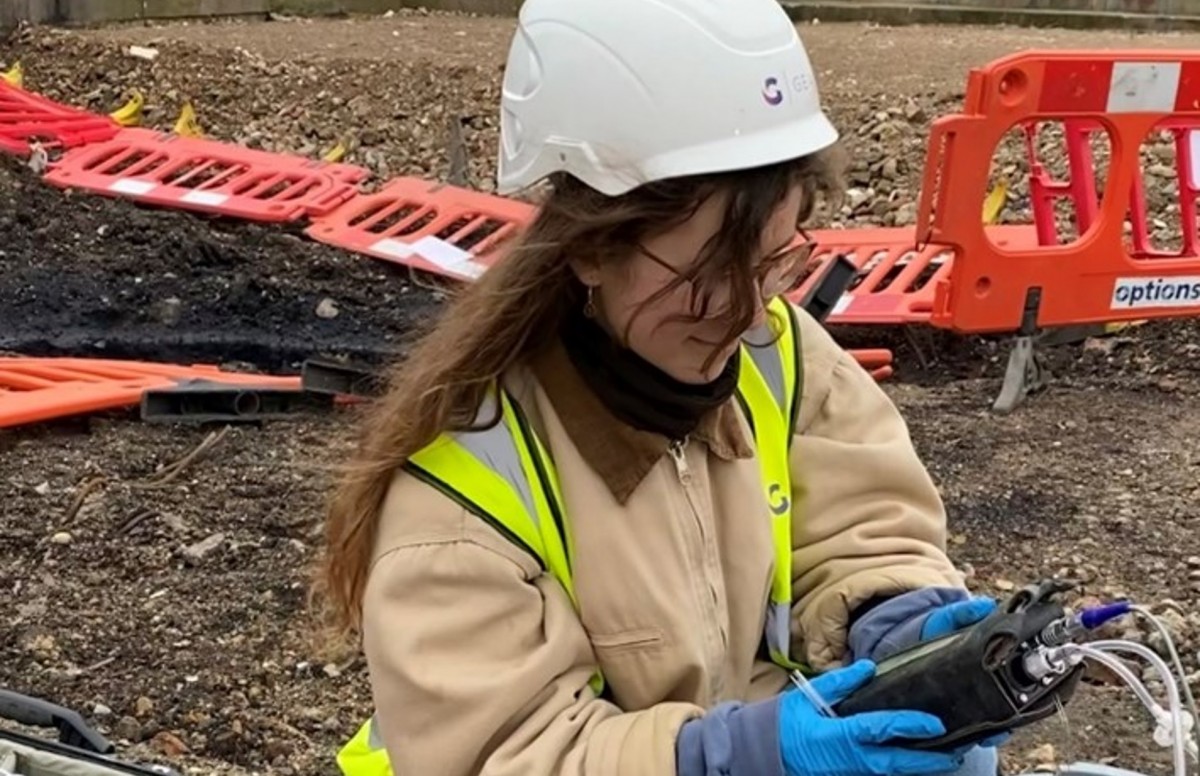Indicators on Geotheta You Should Know
Indicators on Geotheta You Should Know
Blog Article
More About Geotheta
Table of ContentsThe smart Trick of Geotheta That Nobody is DiscussingSome Known Details About Geotheta 9 Simple Techniques For GeothetaGeotheta Things To Know Before You Get This10 Simple Techniques For Geotheta

They conduct site investigations, gather examples, do research laboratory examinations, and evaluate information to evaluate the suitability of the ground for construction projects - Engineer of Record. Based on their searchings for, geotechnical designers give suggestions for foundation style, incline stability, keeping structures, and reduction of geotechnical hazards. They work together with various other specialists, such as engineers, architectural engineers, and building and construction teams, to make certain that geotechnical considerations are incorporated into the total job layout and execution
By examining the behavior and buildings of soil and rock, they can determine possible geotechnical risks such as landslides, soil negotiation, or slope instability. Their competence helps avoid failures or mishaps that can endanger lives and building. Below are some comprehensive responsibilities and obligations of a geotechnical engineer: Site Examination: Geotechnical engineers conduct website investigations to gather information on subsurface problems.
They translate the data to understand the homes and habits of the soil and rock, including their stamina, permeability, compaction characteristics, and groundwater conditions. Geotechnical Evaluation and Design: Geotechnical designers analyze the data accumulated during site investigations to examine the stability and viability of the website for building and construction projects. They carry out geotechnical computations and modeling to review variables such as bearing ability, negotiation, slope stability, lateral planet stress, and groundwater circulation.
The Of Geotheta
Foundation Layout: Geotechnical engineers play a crucial function in making structures that can safely sustain the desired structure. They assess the dirt conditions and lots needs to figure out the ideal foundation type, such as superficial foundations (e.g., grounds), deep structures (e.g (https://www.pubpub.org/user/ian-hammond)., piles), or specialized methods like dirt renovation. They consider variables such as negotiation limits, bearing capacity, and soil-structure interaction to develop optimal foundation styles
They review building plans, screen site activities, and conduct field inspections to verify that the style referrals are adhered to. If unforeseen geotechnical concerns emerge, they evaluate the scenario and supply recommendations for remediation or modifications to the layout. Risk Assessment and Mitigation: Geotechnical engineers examine geotechnical dangers and threats related to the task site, such as landslides, liquefaction, or soil erosion.

Partnership and Communication: Geotechnical engineers function closely with other experts associated with a job, such as engineers, structural engineers, and building groups. Effective interaction and collaboration are vital to integrate geotechnical factors to consider right into the overall project style and building and construction process. Geotechnical engineers supply technical know-how, answer questions, and ensure hop over to here that geotechnical demands are satisfied.
A Biased View of Geotheta
Below are some kinds of geotechnical engineers: Structure Designer: Structure designers focus on creating and examining structures for structures. They assess the dirt problems, lots needs, and website features to establish the most ideal foundation type and layout, such as superficial foundations, deep foundations, or specialized methods like stack foundations.
They review the aspects affecting slope security, such as soil properties, groundwater conditions, and slope geometry, and create strategies to stop incline failures and mitigate risks. Quake Designer: Earthquake designers concentrate on analyzing and developing structures to withstand seismic forces. They assess the seismic hazard of a site, review dirt liquefaction capacity, and create seismic style standards to ensure the safety and security and strength of frameworks throughout earthquakes.
They do field testing, accumulate examples, and assess the gathered data to identify the soil buildings, geologic formations, and groundwater problems at a site. Geotechnical Instrumentation Designer: Geotechnical instrumentation engineers concentrate on surveillance and determining the behavior of soil, rock, and frameworks. They install and preserve instrumentation systems that check aspects such as soil settlement, groundwater degrees, slope movements, and architectural variations to analyze efficiency and give very early cautions of prospective concerns.
Everything about Geotheta
They conduct examinations such as triaxial tests, combination examinations, direct shear tests, and leaks in the structure tests to gather data for geotechnical evaluation and design. Geosynthetics Designer: Geosynthetics designers concentrate on the design and application of geosynthetic materials, such as geotextiles, geogrids, and geomembranes. They make use of these materials to boost soil stability, reinforce slopes, provide water drainage remedies, and control erosion.
They have a tendency to be investigatory people, which implies they're intellectual, reflective, and investigative. They wonder, methodical, logical, analytical, and sensible. Several of them are also social, suggesting they're kind, charitable, participating, patient, caring, useful, understanding, tactful, and pleasant. Does this seem like you? Take our totally free profession examination to learn if geotechnical engineer is one of your top career suits.
In the workplace setting, geotechnical designers make use of specialized software application devices to perform estimations, develop designs, and examine data. They prepare reports, review project specifications, communicate with customers and group participants, and coordinate job activities. The workplace setup supplies a helpful atmosphere for research study, evaluation, and collaboration with other professionals entailed in the job.
The Single Strategy To Use For Geotheta
They frequently check out job sites to conduct site examinations, examine geotechnical problems, and collect information for evaluation. These sees involve traveling to different places, occasionally in remote or tough surfaces. Geotechnical designers might perform soil sampling, conduct examinations, and screen building and construction tasks to make sure that the geotechnical elements of the job are being implemented appropriately.
Geotechnical designers also operate in specialized geotechnical research laboratories. In these centers, they perform experiments, carry out tests on dirt and rock examples, and examine the engineering properties of the products. Geotechnical research laboratory engineers work extensively in these environments, managing screening tools, running tools, and videotaping data. They collaborate with other laboratory staff to ensure accurate and trusted screening results.
Report this page